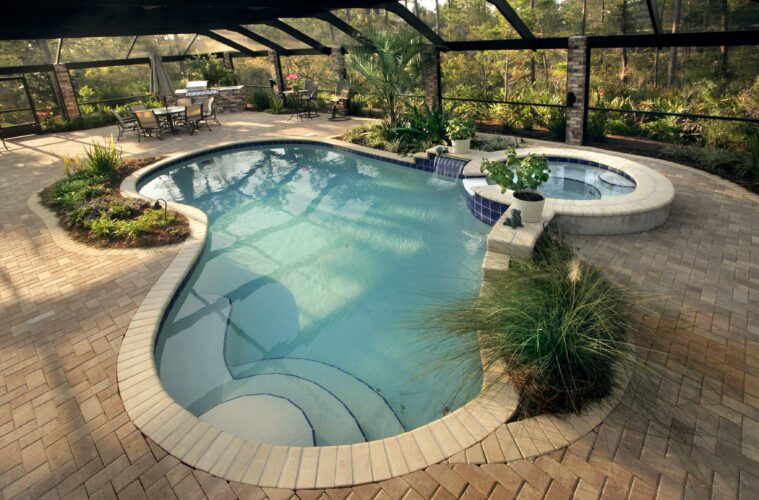Choosing the right location for your swimming pool is one of the most crucial steps in the planning process. The location affects not only the aesthetics and functionality of your pool but also its safety, maintenance, and cost. For instance, placing your pool too close to trees may increase maintenance due to falling leaves, while positioning it in a sunny spot can enhance its appeal and usability. Additionally, the slope of your yard and proximity to utilities can impact installation costs. As a homeowner or a pool enthusiast, understanding the various factors that influence this decision can help you make an informed choice, ensuring years of enjoyment and satisfaction. Consulting with professionals and considering local zoning laws and regulations can further aid in making the best decision for your swimming pool’s location.
Factors to Consider
Soil Type and Stability
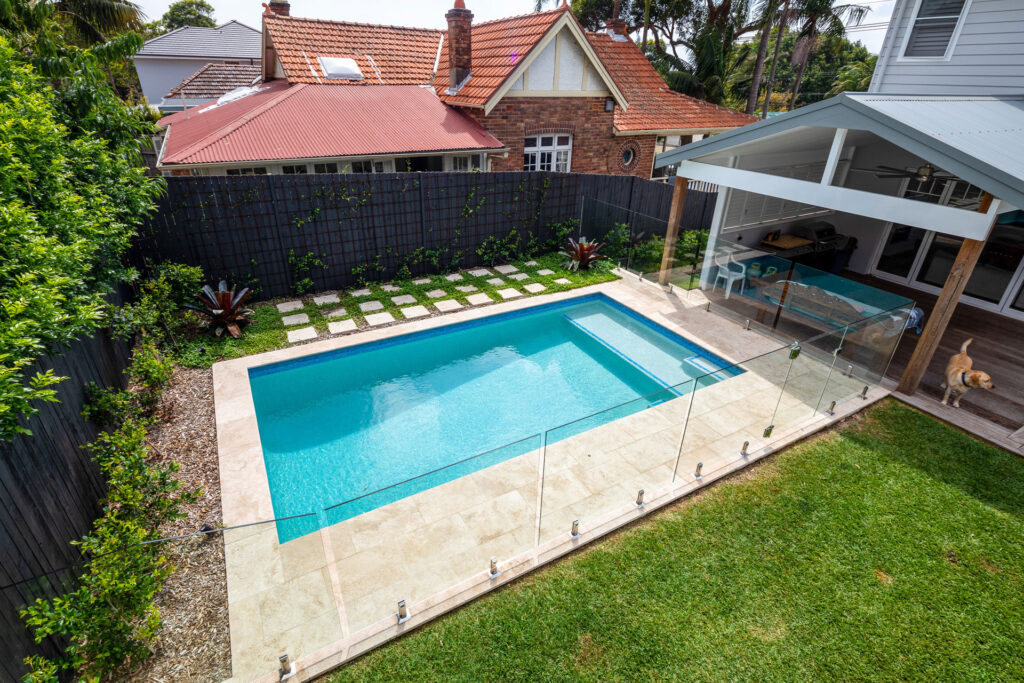
source: crystalpools
The type and stability of the soil in your yard are fundamental considerations. Certain soil types, such as clay, can expand and contract dramatically with changes in moisture levels, potentially causing damage to your pool structure. Conversely, sandy soil may shift and settle over time. Conducting a soil test can provide valuable insights into the suitability of the ground for a swimming pool and may influence the design and construction methods used.
Sunlight Exposure
Sunlight exposure plays a significant role in maintaining a comfortable water temperature and reducing energy costs. Position your pool in an area that receives ample sunlight throughout the day. Avoid placing the pool in the shadow of buildings, trees, or other structures, as this can lead to cooler water temperatures and increased heating costs.
Wind Direction and Intensity
Wind can cause excessive evaporation and cooling of your pool water, leading to increased water and energy costs. Placing the pool in a sheltered area can help mitigate this effect. This can be achieved by utilising existing structures such as your house or garage, which can act as natural barriers. Additionally, you can add windbreaks such as tall hedges, fences, or walls specifically designed to shield your pool from strong winds. Not only do these windbreaks enhance the comfort of your pool area by reducing chill, but they also contribute to greater energy efficiency, reducing the need for frequent water and heat replenishment.
Proximity to Trees and Vegetation
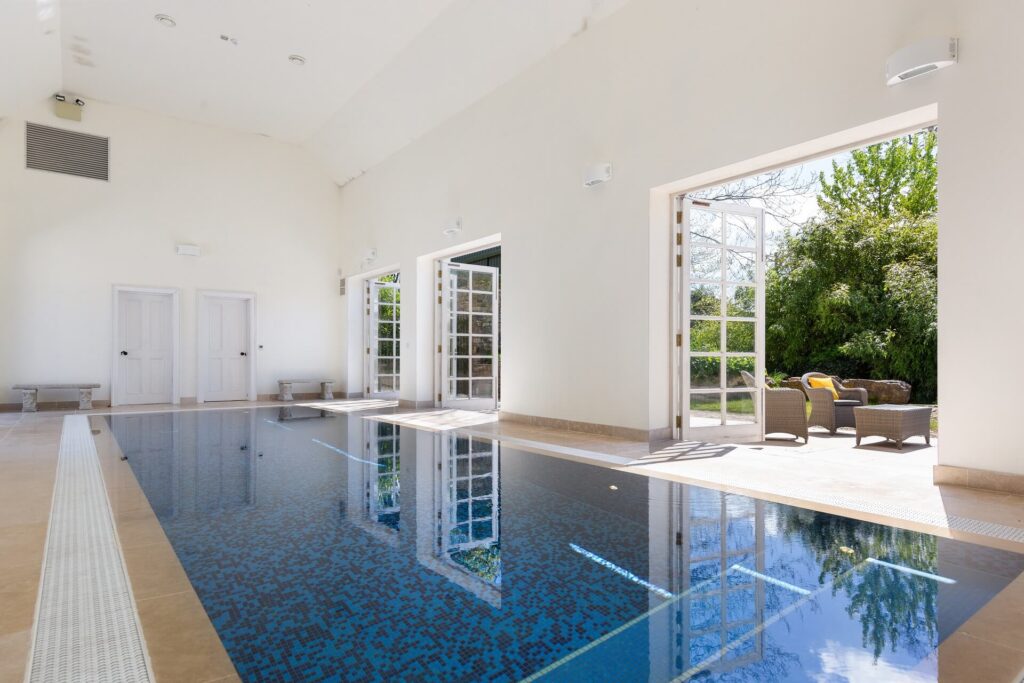
source: christiesrealestate
While trees and vegetation can create a picturesque backdrop for your pool, they can also contribute to debris, such as leaves and twigs, falling into the water. This not only increases maintenance but can also affect water quality. Additionally, tree roots can pose a structural risk to your pool. Choose a location that balances aesthetics with practicality, keeping the pool at a reasonable distance from large trees and dense vegetation.
Privacy and Views
Privacy is often a top priority for homeowners when installing a swimming pool. Consider the sightlines from neighbouring properties and public areas. Use landscaping elements like trees, shrubs, and privacy screens to create a secluded oasis. At the same time, maximise views from the pool to enhance your overall outdoor experience.
Accessibility and Zoning Regulations
Accessibility is key to enjoying your pool. Ensure the location provides easy access from your home, as well as sufficient space for poolside activities and furniture. Additionally, be aware of local zoning regulations and building codes, which may dictate setbacks, fencing requirements, and other considerations. Consulting with a professional can help navigate these regulations and ensure compliance.
Design Tips for Different Locations
Urban Settings
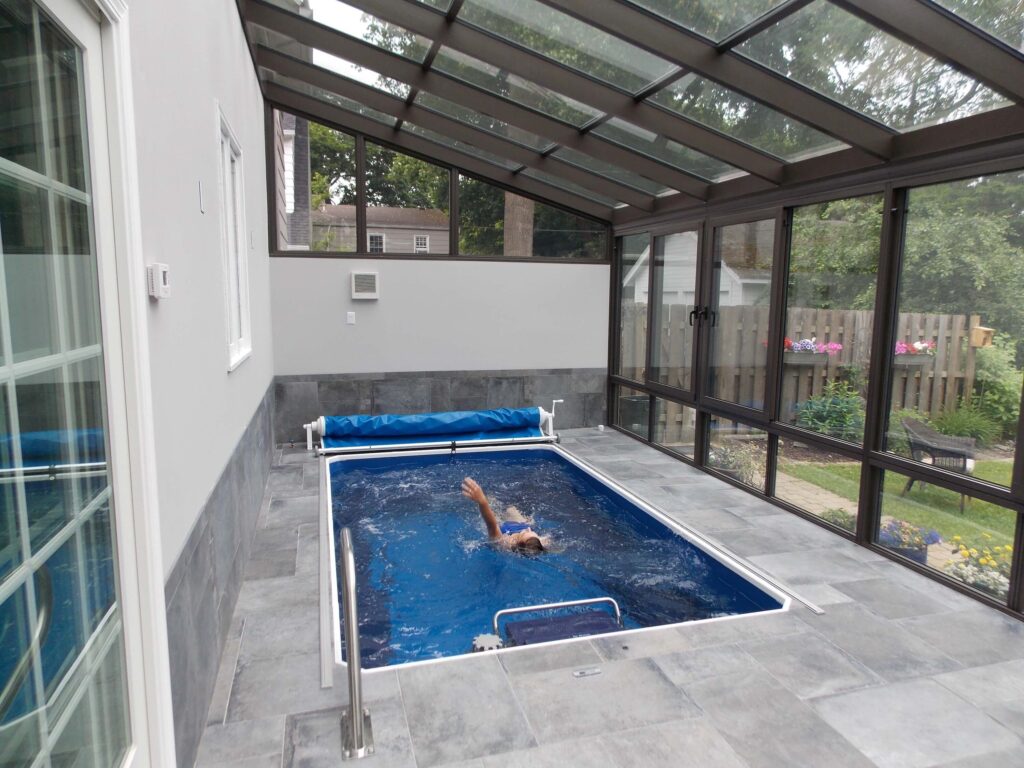
source: endlesspools
In urban settings, space is often limited, and privacy is a concern. Consider a sleek, modern design that maximises the available space while incorporating privacy features such as tall fences or green walls. Plunge pools, lap pools, and above-ground pools can be excellent options for urban environments. These types of perth pools not only fit well into smaller areas but also offer a refreshing escape from the hustle and bustle of city life. Additionally, incorporating features like water fountains, ambient lighting, and comfortable seating can enhance the overall aesthetic and functionality of your urban pool area, making it a perfect oasis for relaxation and entertainment.
Coastal Settings
Coastal settings offer unique opportunities for stunning pool designs that complement the natural surroundings, with the potential to create breathtaking views and serene atmospheres. However, constructing and maintaining a pool in these areas presents challenges, as saltwater and strong coastal winds can significantly affect pool maintenance and durability. To ensure longevity, it’s crucial to choose materials resistant to corrosion, such as high-quality stainless steel or specially treated wood. Additionally, consider installing windbreaks, like strategically placed plants, walls, or screens, to protect your pool area from the harsh coastal elements. Proper planning and material selection will help you enjoy your beautiful coastal pool for many years to come.
Rural Settings
Rural settings typically offer more space and natural beauty. Take advantage of the expansive landscape by incorporating natural design elements such as rock formations, waterfalls, and lush plantings. Ensure the pool location harmonises with the natural terrain and enhances the overall aesthetic of your property.
Cost Considerations
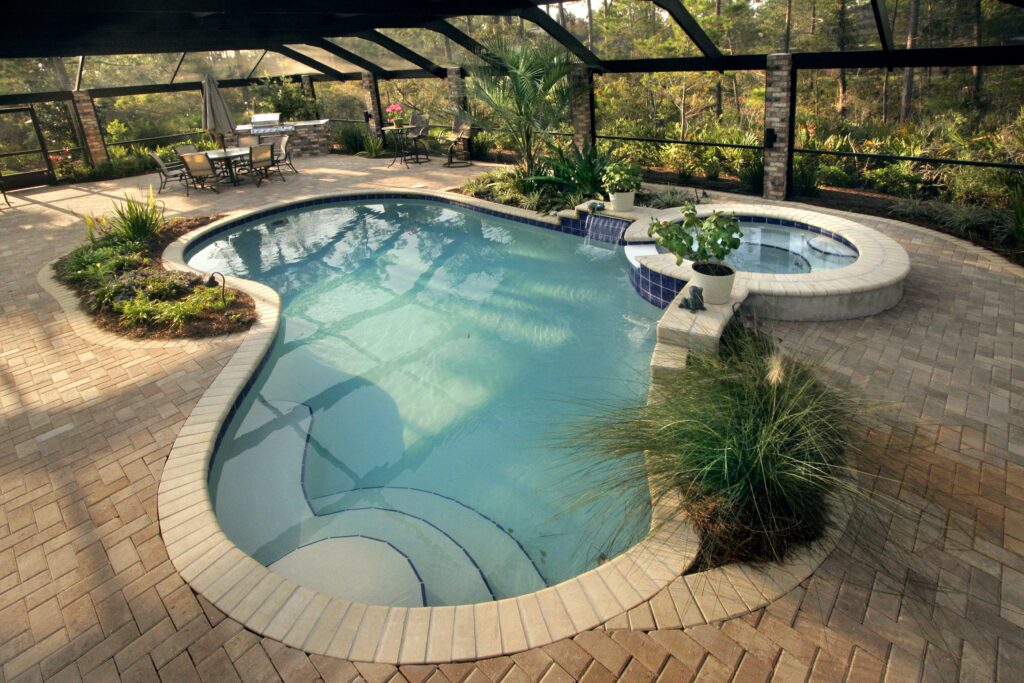
source: thewowstyle
The location of your pool can significantly impact both the initial construction costs and long-term maintenance expenses.
- Initial Costs: Difficult terrain, such as rocky or sloped areas, can increase excavation and construction costs. Additionally, remote locations may incur higher transportation and labour costs.
- Long-Term Costs: Factors such as exposure to sunlight and wind, proximity to trees, and soil stability can influence maintenance and energy costs over time. A well-chosen location can minimise these expenses and contribute to the longevity of your pool.
Conclusion
In summary, choosing the perfect location for your swimming pool involves careful consideration of several factors, including soil type, sunlight, wind, vegetation, privacy, and accessibility. By understanding these elements and how they interact, you can make an informed decision that enhances the enjoyment and value of your pool for years to come. Remember, consulting with a professional can provide tailored advice for your specific situation, helping you achieve the ideal pool location.

